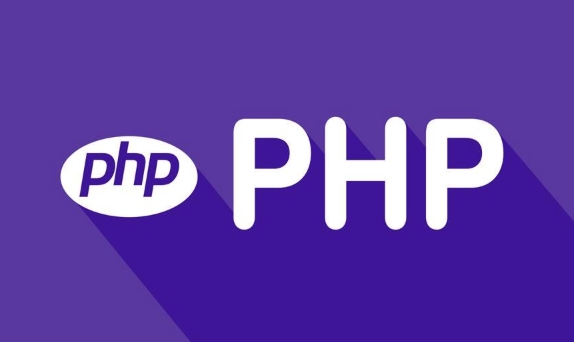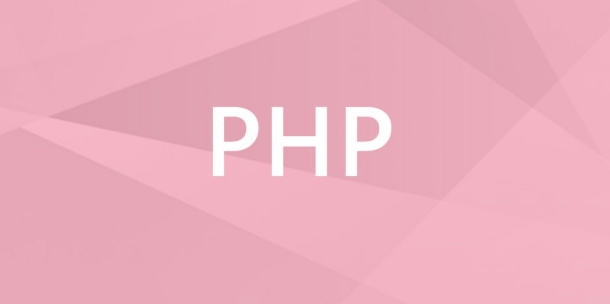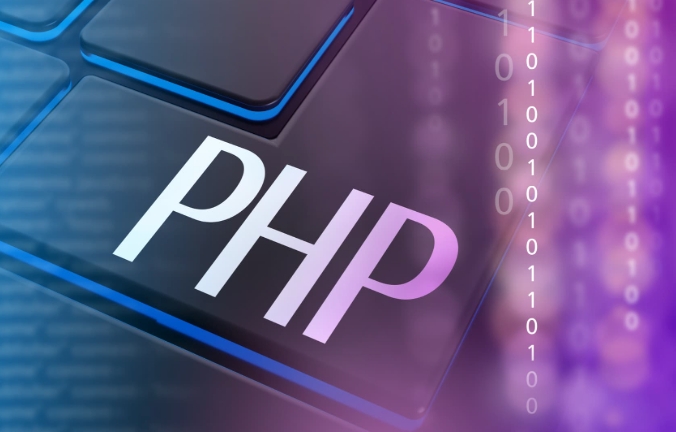 Backend Development
Backend Development
 PHP Tutorial
PHP Tutorial
 PHP development environment configuration: Tips to avoid common mistakes
PHP development environment configuration: Tips to avoid common mistakes
PHP development environment configuration: Tips to avoid common mistakes
Jun 26, 2025 am 12:50 AMThe key to configuring a PHP development environment is to select the right tool, pay attention to the matching of versions and extensions, and set up the virtual host correctly. Newbie recommends using XAMPP or Laragon one-click installation; experienced people can choose Docker or Vagrant; manual compilation is not recommended. Different projects need to pay attention to the differences in PHP versions, view the version and extensions through php -v and php -m, modify php.ini to enable modules, and confirm whether the configuration file path is loaded correctly. When configuring a virtual host, you must ensure that Apache's DocumentRoot points to the project directory correctly, check the ServerName and directory configuration in httpd-vhosts.conf, and pay attention to the system permission settings and whether the virtual host module is enabled for the main configuration file.

It is actually not too difficult to configure a PHP development environment, but it is easy for novices to get into pitfalls during the construction process. The most common problems include missing extensions, wrong path configuration, incompatible versions, etc. Just pay attention to a few key points to avoid most of the trouble.

Choose the right development tool combination
Many people are struggling to use XAMPP, WAMP or manually use Apache PHP MySQL at the beginning. In fact, for novices, XAMPP is the most convenient choice, with one-click installation and basic functions. If you already have experience and want to be more flexible in control, you can consider Docker or Vagrant to manage the environment.

- If it is only local development, it is recommended to use XAMPP or Laragon
- Docker is a good choice to simulate production environments
- It is not recommended to compile and install manually at the beginning, as it is prone to errors and wastes time
Pay attention to the matching issues between PHP version and extension
Different projects may have different PHP version requirements. For example, some old projects can only run in PHP 7.4, while new projects may already use PHP 8.2. If you only install one version at this time, compatibility issues are likely to occur. Moreover, many extensions (such as gd, opcache, exif) are not enabled by default, and you need to manually enable them in php.ini.
Common practices are:

- Use
php -vto view the current version - Use
php -mto view loaded extensions - Remember to remove the semicolon when modifying the php.ini file
;enable the module - Multi-version switching can be supported by PHPBrew or Laragon
Sometimes you have installed an extension but cannot find it on the command line or web page. The probability is that you have corrected the location of the php.ini file. Remember to confirm which configuration file is loading, and you can view it through phpinfo() output.
Don't ignore permissions and path settings when configuring virtual hosts
When developing multiple projects locally, configuring virtual hosts (Virtual Host) is very convenient. However, novices often encounter problems such as accessing 403, page cannot be opened, and prompting insufficient permissions. This is usually because the directory permissions are not matched or Apache does not point to your project path correctly.
Solution:
- Make sure Apache's DocumentRoot points to the correct directory
- Configure ServerName and corresponding directory in httpd-vhosts.conf
- Under Windows, please pay attention to whether user permissions allow Apache to access project folders
- Mac or Linux users can use chmod to modify directory permissions
There is another small detail that is easily overlooked: whether Include conf/extra/httpd-vhosts.conf in Apache's main configuration file httpd.conf has been commented out, and if so, the virtual host configuration will not take effect.
Basically that's it. When you first start building an environment, you will always encounter various small problems. The key is to understand the role of each component and the connection between them. After getting familiar with it slowly, you will find that the entire process is not complicated, but some parts are easy to ignore.
The above is the detailed content of PHP development environment configuration: Tips to avoid common mistakes. For more information, please follow other related articles on the PHP Chinese website!

Hot AI Tools

Undress AI Tool
Undress images for free

Undresser.AI Undress
AI-powered app for creating realistic nude photos

AI Clothes Remover
Online AI tool for removing clothes from photos.

Clothoff.io
AI clothes remover

Video Face Swap
Swap faces in any video effortlessly with our completely free AI face swap tool!

Hot Article

Hot Tools

Notepad++7.3.1
Easy-to-use and free code editor

SublimeText3 Chinese version
Chinese version, very easy to use

Zend Studio 13.0.1
Powerful PHP integrated development environment

Dreamweaver CS6
Visual web development tools

SublimeText3 Mac version
God-level code editing software (SublimeText3)

Hot Topics
 What are some best practices for versioning a PHP-based API?
Jun 14, 2025 am 12:27 AM
What are some best practices for versioning a PHP-based API?
Jun 14, 2025 am 12:27 AM
ToversionaPHP-basedAPIeffectively,useURL-basedversioningforclarityandeaseofrouting,separateversionedcodetoavoidconflicts,deprecateoldversionswithclearcommunication,andconsidercustomheadersonlywhennecessary.StartbyplacingtheversionintheURL(e.g.,/api/v
 How do I implement authentication and authorization in PHP?
Jun 20, 2025 am 01:03 AM
How do I implement authentication and authorization in PHP?
Jun 20, 2025 am 01:03 AM
TosecurelyhandleauthenticationandauthorizationinPHP,followthesesteps:1.Alwayshashpasswordswithpassword_hash()andverifyusingpassword_verify(),usepreparedstatementstopreventSQLinjection,andstoreuserdatain$_SESSIONafterlogin.2.Implementrole-basedaccessc
 What are the differences between procedural and object-oriented programming paradigms in PHP?
Jun 14, 2025 am 12:25 AM
What are the differences between procedural and object-oriented programming paradigms in PHP?
Jun 14, 2025 am 12:25 AM
Proceduralandobject-orientedprogramming(OOP)inPHPdiffersignificantlyinstructure,reusability,anddatahandling.1.Proceduralprogrammingusesfunctionsorganizedsequentially,suitableforsmallscripts.2.OOPorganizescodeintoclassesandobjects,modelingreal-worlden
 What are weak references (WeakMap) in PHP, and when might they be useful?
Jun 14, 2025 am 12:25 AM
What are weak references (WeakMap) in PHP, and when might they be useful?
Jun 14, 2025 am 12:25 AM
PHPdoesnothaveabuilt-inWeakMapbutoffersWeakReferenceforsimilarfunctionality.1.WeakReferenceallowsholdingreferenceswithoutpreventinggarbagecollection.2.Itisusefulforcaching,eventlisteners,andmetadatawithoutaffectingobjectlifecycles.3.YoucansimulateaWe
 How can you handle file uploads securely in PHP?
Jun 19, 2025 am 01:05 AM
How can you handle file uploads securely in PHP?
Jun 19, 2025 am 01:05 AM
To safely handle file uploads in PHP, the core is to verify file types, rename files, and restrict permissions. 1. Use finfo_file() to check the real MIME type, and only specific types such as image/jpeg are allowed; 2. Use uniqid() to generate random file names and store them in non-Web root directory; 3. Limit file size through php.ini and HTML forms, and set directory permissions to 0755; 4. Use ClamAV to scan malware to enhance security. These steps effectively prevent security vulnerabilities and ensure that the file upload process is safe and reliable.
 How can you interact with NoSQL databases (e.g., MongoDB, Redis) from PHP?
Jun 19, 2025 am 01:07 AM
How can you interact with NoSQL databases (e.g., MongoDB, Redis) from PHP?
Jun 19, 2025 am 01:07 AM
Yes, PHP can interact with NoSQL databases like MongoDB and Redis through specific extensions or libraries. First, use the MongoDBPHP driver (installed through PECL or Composer) to create client instances and operate databases and collections, supporting insertion, query, aggregation and other operations; second, use the Predis library or phpredis extension to connect to Redis, perform key-value settings and acquisitions, and recommend phpredis for high-performance scenarios, while Predis is convenient for rapid deployment; both are suitable for production environments and are well-documented.
 What are the differences between == (loose comparison) and === (strict comparison) in PHP?
Jun 19, 2025 am 01:07 AM
What are the differences between == (loose comparison) and === (strict comparison) in PHP?
Jun 19, 2025 am 01:07 AM
In PHP, the main difference between == and == is the strictness of type checking. ==Type conversion will be performed before comparison, for example, 5=="5" returns true, and ===Request that the value and type are the same before true will be returned, for example, 5==="5" returns false. In usage scenarios, === is more secure and should be used first, and == is only used when type conversion is required.
 How do I perform arithmetic operations in PHP ( , -, *, /, %)?
Jun 19, 2025 pm 05:13 PM
How do I perform arithmetic operations in PHP ( , -, *, /, %)?
Jun 19, 2025 pm 05:13 PM
The methods of using basic mathematical operations in PHP are as follows: 1. Addition signs support integers and floating-point numbers, and can also be used for variables. String numbers will be automatically converted but not recommended to dependencies; 2. Subtraction signs use - signs, variables are the same, and type conversion is also applicable; 3. Multiplication signs use * signs, which are suitable for numbers and similar strings; 4. Division uses / signs, which need to avoid dividing by zero, and note that the result may be floating-point numbers; 5. Taking the modulus signs can be used to judge odd and even numbers, and when processing negative numbers, the remainder signs are consistent with the dividend. The key to using these operators correctly is to ensure that the data types are clear and the boundary situation is handled well.





